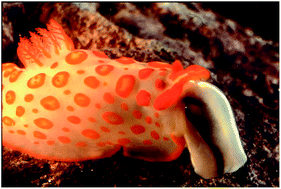Chemical mediation as a structuring element in marine gastropod predator-prey interactions
Abstract
Covering: up to 2017
Chemical mediation regulates behavioral interactions between species and thus affects population structure, community organization and ecosystem function. Among marine taxa that have developed chemical mediation strategies, gastropods belong to a diverse group of molluscs found worldwide, including species with a coiled, reduced or absent shell. Most gastropods use natural products to mediate a wide range of behaviors such as defense, prey location or interactions with con- and hetero-geners. Their chemically defended diet, such as cyanobacteria, algae, sponges, bryozoans and tunicates, provides them with a considerable opportunity either as shelter from predators, or as a means to enhance their own chemical defense. In addition to improving their defenses, molluscs also use prey secondary metabolites in complex chemical communication including settlement induction, prey detection and feeding preferences. The assimilation of prey secondary metabolites further provides the opportunity for interactions with conspecifics via diet-derived chemical cues or signals. This review intends to provide an overview on the sequestration, detoxification, and biotransformation of diet-derived natural products, as well as the role of these compounds as chemical mediators in gastropod-prey interactions.



 Please wait while we load your content...
Please wait while we load your content...